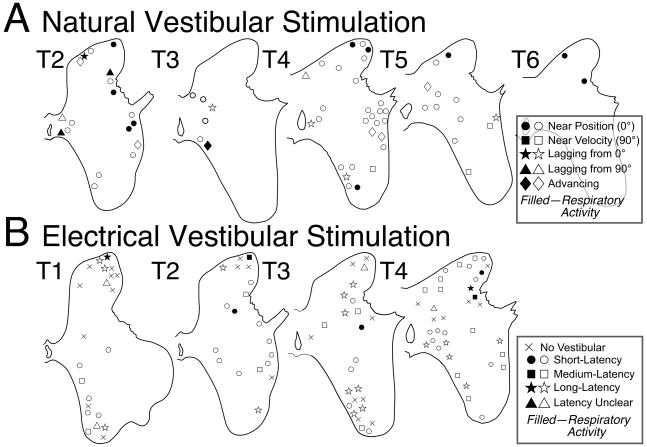Figure 3.
Locations of putative interneurons plotted on transverse sections of the upper thoracic spinal gray matter; the segment depicted in each diagram is indicated. A: Locations of neurons whose responses to natural vestibular stimulation were characterized. Symbols of different types are used to designate positions of units whose response phases were within 45° of stimulus position at all rotational frequencies (near position), were within 45° of stimulus velocity at all frequencies (near velocity), developed a phase lag with respect to stimulus position (lagging from 0°) or velocity (lagging from 90°) as rotational frequency was increased, or exhibited a response phase near stimulus position at low rotational frequencies that advanced to near stimulus velocity at high frequencies (advancing). Shaded symbols indicate neurons with firing related to ventilation. B: Locations of neurons tested for responses to electrical stimulation of the vestibular nerve. Symbols of different types are used to designate whether a unit failed to respond to vestibular nerve stimulation (no vestibular), or whether the cell’s firing was altered at a latency < 5.5 msec (short-latency), 5-5—10.5 msec (medium-latency), or > 10.5 msec (long-latency). Cells that responded to vestibular stimulation but whose response latency was not established are designated as “latency unclear.”

